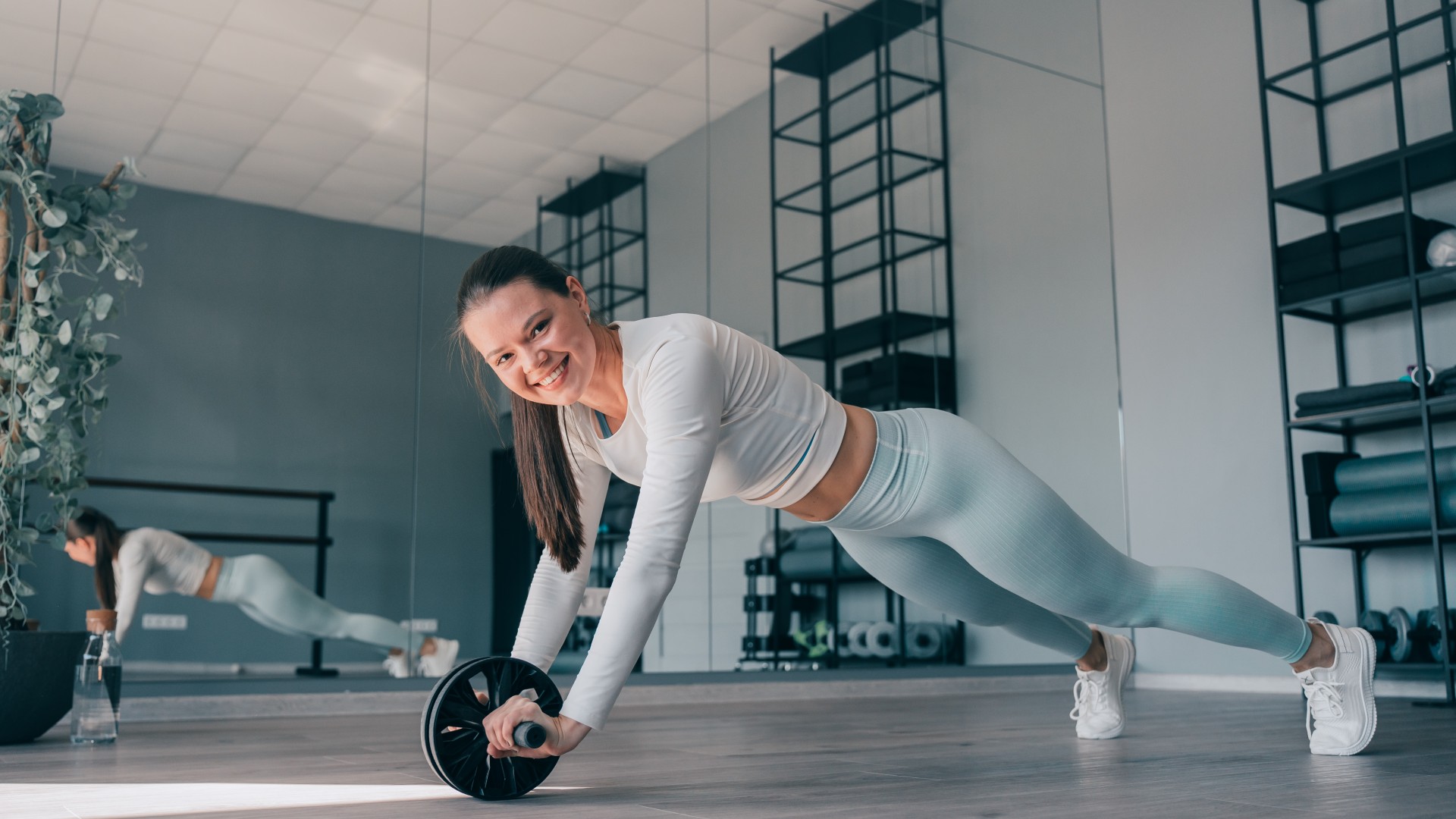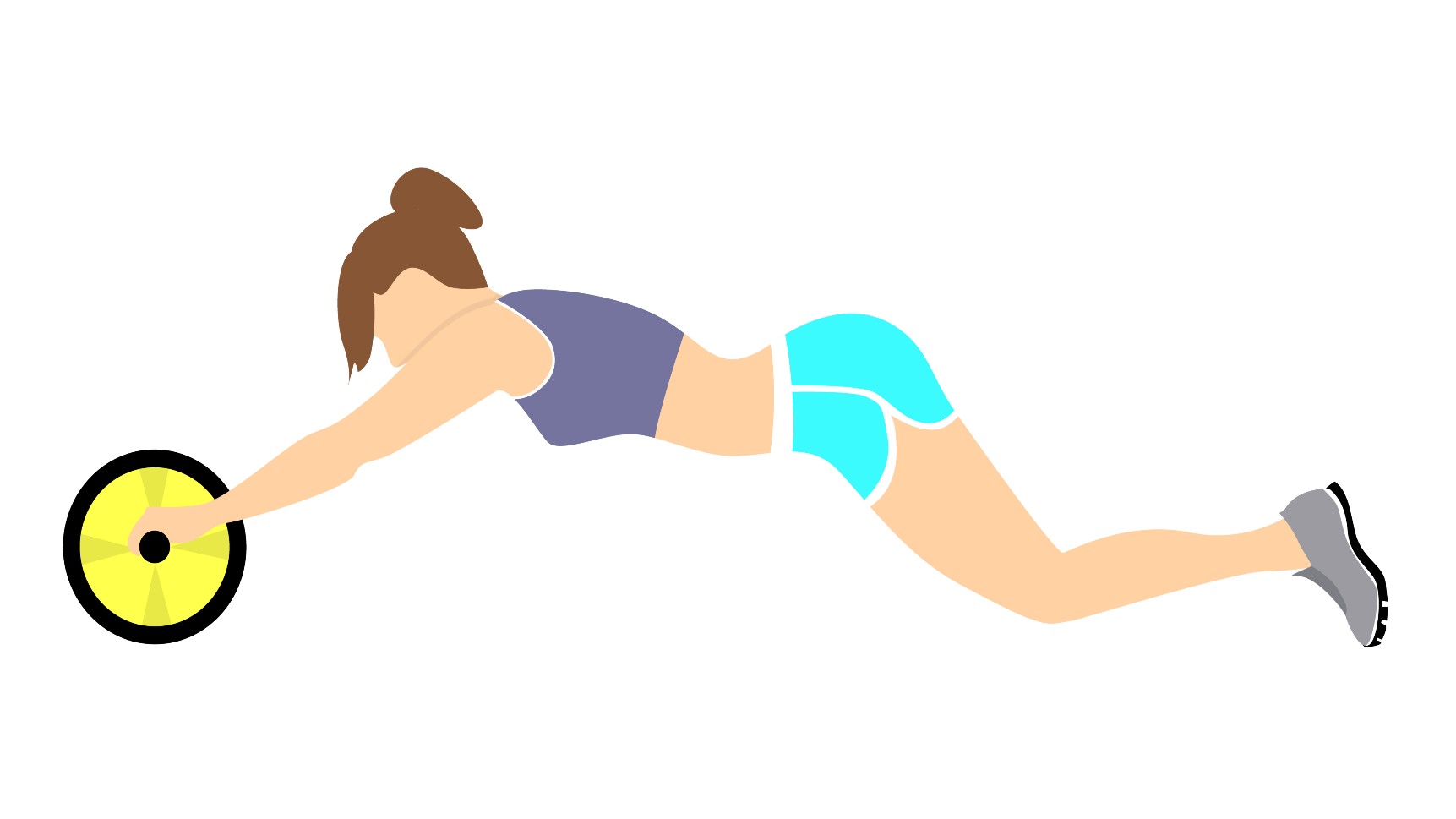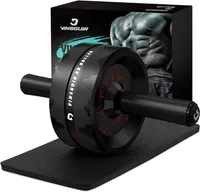
I’m just going to come right out and say it. You don’t need weights to build a stronger core. If you want to add a new piece of gym equipment to home ab workouts, make it one that blasts your abs and upper body in one go. I’m talking about ab rollers, obviously.
It would be irresponsible of me to say this bit of kit is all you need, and of course, the ab roller hasn’t been designed for every body. The ab exercise is one of the toughest to get right, but there’s a reason I did 50 reps of the exercise every day for a week — it’s a killer core workout and pretty satisfying when you finally nail it.
If you plan to try ab rollouts, there are a few tips and tricks to read up on first and contraindications to consider, too. Read on for the benefits of ab rollouts, why I love them and how to decide if the ab and shoulder exercise is for you.
Ab rollout benefits
Ab rollouts develop a strong core and shoulders, but I wouldn’t recommend them for beginners to ab exercises or anyone with shoulder or lower back injuries. It looks simple — you’re rolling an ab wheel forward and backward, after all — yet it’s anything but.
The safest way to approach it is to develop your shoulder stability and mobility first, plus some base-level core strength before you get the ab wheel rolling.
Vinsguir ab roller was $33 now $25 @ Amazon
Save 24% on the hugely popular Vinsguir roller for a limited time and grab $6 off at checkout. The model has been rated as Amazon's Choice and comes with handy knee pads to support your joints.
Ab rollouts primarily target the rectus abdominis (or six-pack muscles) that run down the front of your stomach and create the most muscular definition. The move also hits the spinal stabilizers called the erector spinae muscles and the transverse abdominis (a belt of deeper core muscles that sit beneath the abs known as “inner abs”).
If that’s not enough, you’ll work your lats (muscles that run down the sides of your back and assist with the rolling motion), chest, arms, shoulders and hip flexors, and you can engage your obliques by rolling in different directions.
Get instant access to breaking news, the hottest reviews, great deals and helpful tips.
Strengthening these muscles will build a stronger torso, but how much ab definition you see as a result will depend on your training routine and lifestyle factors like diet. They weren’t lying when they said abs are made in the kitchen. Sadly.
How to do ab rollouts with proper form

How:
- Start on your knees (you can use a mat to support your joints)
- Place your ab roller (also called a wheel) in front of you and grip it using both hands
- Brace your stomach and position your shoulders over the wheel
- Slowly guide the wheel forward as far as you can, pause, then drive the wheel back in.
Keep your shoulders tracking forward, arms straight and hips and chest lifted to keep your weight over the wheel. You should not arch at all through your lower back. A slight doming through your upper back should help keep position without losing form, and once you’ve got the standard ab wheel rollout down, you could jack the exercise up further by practicing from a standing position.
What are the best ab rollers?
Ab wheels or ab rollers, whatever you call them, they’re not all the same.
The instability of the wheel challenges muscles to coordinate, balance and stabilize your body, so it makes sense that the thinner the tread, the more challenging the ab rollout.
Some have nifty features like spring coils that can add resistance or assistance while you roll (yes, you, Perfect Fitness Ab Carver Pro), while others have angled handles to help activate the arms and shoulders. You can even find dual design options to up the ante — one roller per hand.
Whichever model you choose, make it one that suits your fitness ability level and budget. If you’re suffering from an injury, I recommend checking with a qualified personal trainer or physician before you begin ab wheel rollouts, and if you experience sharp or prolonged pain during exercise, stop immediately and seek medical advice.
More from Tom's Guide
- 5 best ways to build muscle without lifting heavier weights
- I'm a personal trainer and this is the most underrated gym equipment for building strength
- Forget crunches — build a stronger core with this 10-minute standing abs workout

Sam Hopes is a level 3 qualified trainer, a level 2 Reiki practitioner and fitness editor at Tom's Guide. She is also currently undertaking her Yoga For Athletes training course.
Sam has written for various fitness brands and websites over the years and has experience across brands at Future, such as Live Science, Fit&Well, Coach, and T3.
Having coached at fitness studios like F45 and Virgin Active and personal trained, Sam now primarily teaches outdoor bootcamps, bodyweight, calisthenics and kettlebells.
She also coaches mobility and flexibility classes several times a week and believes that true strength comes from a holistic approach to training your body.
Sam has completed two mixed doubles Hyrox competitions in London and the Netherlands and finished her first doubles attempt in 1:11.

